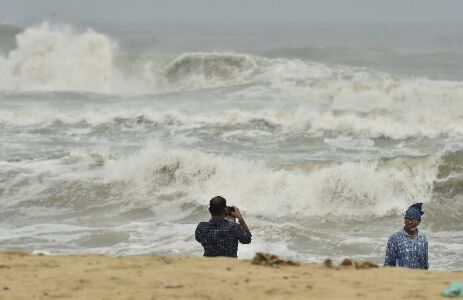Irrefutable signs

There is a rising consensus across the world on the nature of climate change. A 2020 national survey by the Pew Foundation in the US showed that two-thirds of the people surveyed atleast thought that their government should do more in regards to climate change. This in no means indicates that climate change scepticism is actually on the decline. It is, however, an indication that climate change across the world is reaching an effective tipping point where it is starting to make significant and visible changes to our world and our lives.
The most significant sign of this looming crisis is how the nature of climate disaster is now shifting. Even communities that have lived in historically vulnerable locations are now being shaken to the core by the erratic and more frequent nature of these disasters, be it floods, forest fires or, in this case, tropical cyclones.
Tropical cyclones are regarded as a likely candidate for the descriptor of the most destructive disasters in terms of cost. There is good indication now that our own activities have been making tropical cyclones more destructive and frequent than usual. While there is no clear consensus on just how much human-made climate change affects tropical cyclones, few disagree that there is indeed some correlation between the two. Climate change as a whole suffers from this uncertainty that is largely a result of their simply not being enough research on the matter. It must be remembered that the proper scientific study of weather systems and such was only enabled by technological advancements of the 20th century. An indication of the difficulty in identifying patterns in such cases can be observed from the fact that until 2019, many experts thought that cyclonic activity in the Indian Ocean was actually decreasing as a result of man-made climate change. Then 2019 came by and so did a record number of cyclones. Now in 2020 Cyclone Amphan has already caused billions worth in damages and has displaced hundreds of thousands when it impacted India and Bangladesh. While indications of its approach were plentiful and preparations were made before it made landfall, what shocked was the magnitude. Amphan had beaten all reasonable scientific predictions and impacted as a full-on super cyclone that had appeared to suddenly intensify. It was speculated later on that this random intensification was likely the result of a marine heatwave raising seawater surface temperatures in the Bay of Bengal. Now, yet another cyclone has unexpectedly intensified before making landfall in India. It was noted that Cyclone Nivar also unexpectedly and swiftly turned into a severe cyclonic storm As of now, Tamil Nadu has reported three dead and lakhs displaced and sheltered. The Tamil Nadu Government has indicated that the situation is still under control as ample preparations were already in place. Now, even as the cyclone is apparently weakening, it has caused torrential rains in Andhra Pradesh. A clear picture is yet to emerge over the final toll but there is enough evidence to indicate the magnitude and urgency of the larger crisis. As research has indicated, the Indian Ocean is a significant climate change hotspot. While it only represents 13 per cent of the global ocean surface, it accounts for a significant 25 per cent of the induced oceanic heat uptake for the world's oceans.
It is clear at this stage that disaster preparation methods and mitigation strategies will not be enough in the long run. While our communities do over time adjust to the dangers of natural disasters, this is far from business as usual. To prevent the apocalypse of our own making, there is a need for India and the world to realistically move towards upholding a 1.5-degree global warming threshold while remembering that time is definitely not on our side.



